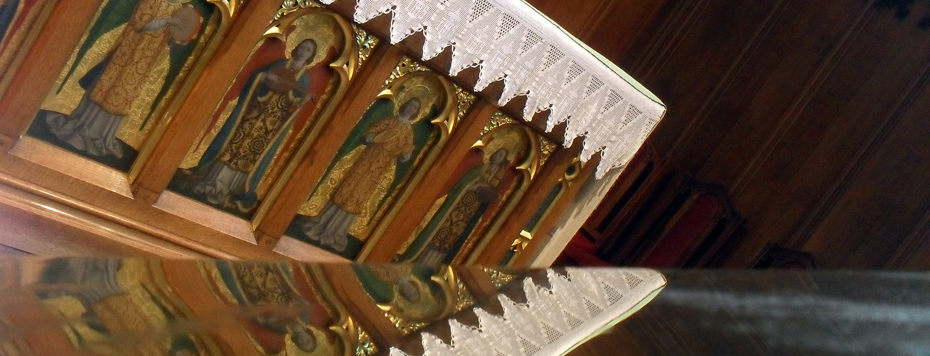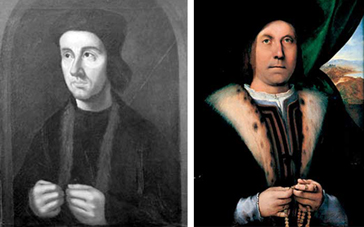
Two sixteenth-century paintings, each of which originally showed a man holding a rosary. The one to the left is of Cuthbert Tunstall – and his rosary was painted out after the Reformation. The man in the portrait on the right, by Lorenzo Lotto, still retains his rosary, and gives an indication of what Tunstall's portrait would have been like before anti-Catholic zeal led to its modification.
Constructed by Bishop Cuthbert Tunstall 1540, the Tunstall Chapel was completed during the first days of the Reformation – the break-away from the Roman Catholic Church and a turning point in English history.
This religious transformation, which was to prove permanent and extremely significant, is best represented in the portrait of Cuthbert Tunstall himself that still hangs in the chapel today. Tunstall's fists are clenched, but he is holding nothing in them – originally, he was depicted holding a rosary, which was painted over after the Reformation because it was a symbol of Catholicism.
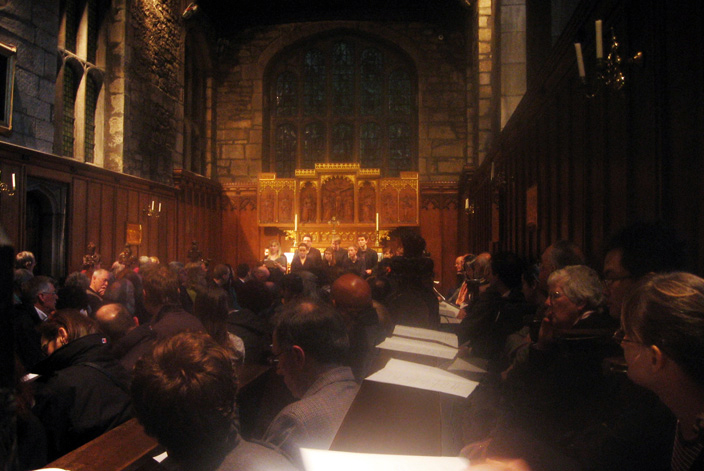
The Tunstall Chapel continues to be used for religious services, and sometimes also for concerts. Here, Durham Polyphony, a university group specialised in medieval and renaissance music, performs a concert of Tudor music in celebration of World Heritage Day.
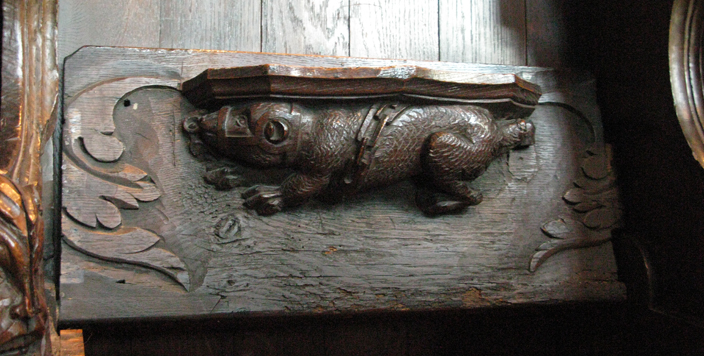
A misericord (mercy seat) in the Tunstall Chapel. This one shows a chained bear, probably referring to the 'sport' of bear-baiting. Misericords provide a wealth of information about the pastimes, myths and popular culture of medieval England.
© Jeffrey Veitch
The Misericords: A Reminder of Forgotten Times
Misericords were used to provide some sort of respite for the congregation during services, which were then very long, and took place standing. A tired member of the congregation could lean on the misericord.
The misericords in the Tunstall Chapel are slightly older than the building itself. They were made in the early sixteenth century for the Bishop's Castle at Auckland, and were moved here by Tunstall. This shows that they were valued as artistic works, not just as utilitarian objects.
A Craftsman's Freedom
Misericords were among the features of a religious building where the craftsmen sometimes had the freedom to depict scenes of their choice. The range of scenes depicted is broad: religious scenes were common, as were allegories, often related to the themes of good and evil (truth, temptation, vanity, etc.).
The misericords in the Tunstall Chapel seem to have been inspired – if not produced – by a workshop of carvers that produced the misericords at Ripon – probably one of the finest sets in England.
Like Chinese whispers, each set of misericords differs slightly from the one that inspired it.
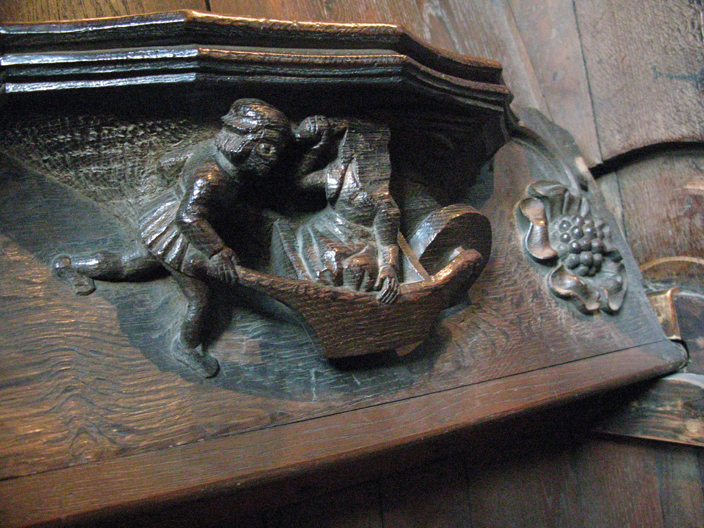
Wives in wheelbarrows were a popular theme of English nursery rhymes. The fact that the husband in this example looks as if he is wearing a kilt has been interpreted to be a joke at the expense of the Scots - the traditional 'enemy' that the Durham Prince Bishops were expected to keep at bay. Amusing as the interpretation of this scene may be, it is a fallacy. The representation is inspired from an earlier French woodcut of a harvest scene.
© Jeffrey Veitch
Wives in Wheelbarrows
The depiction of a wheelbarrow scene was not uncommon in illustrations of the harvest – in woodcuts for example. They quite often appear on misericords as well – of which the Tunstall Chapel is one example. The image of men pushing their wives in wheelbarrows seems to have sparked the imagination and become part of popular culture. Nursery rhymes, for example, often tell of people pushing their wife in a wheelbarrow.
The rats, and the mice, they made such a strife,
I was forc'd to go to London, to buy me a wife.The streets were so broad, and the lanes were so narrow,
I was forc'd to bring my wife home, in a wheelbarrow.The wheelbarrow broke, and give my wife a fall,
The duce take wheelbarrow, wife & all.
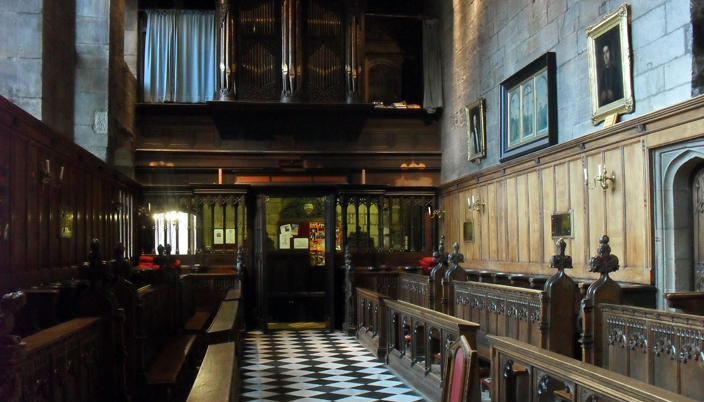
View of the Tunstall Chapel looking away from the altar.

